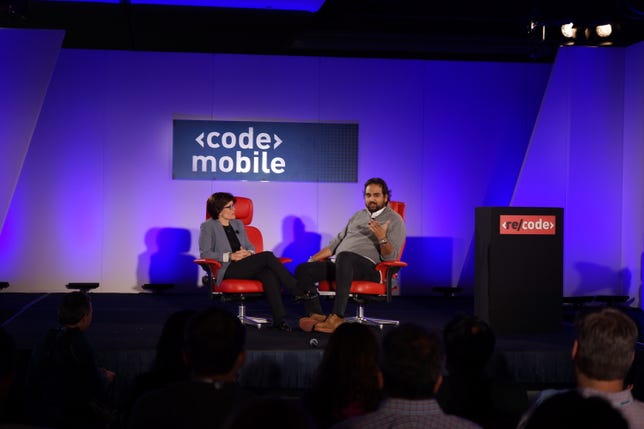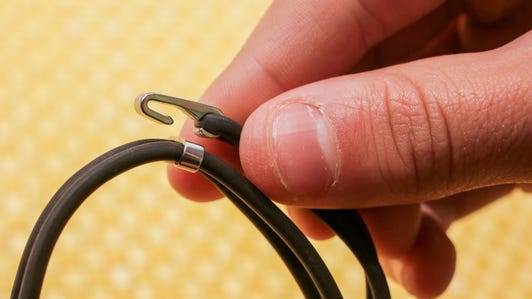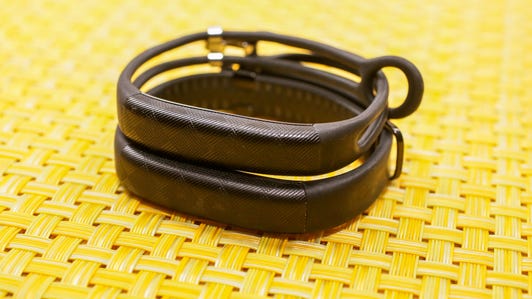 Enlarge Image
Enlarge ImageShara Tibken/CNET
HALF MOON BAY, California — The future of wearables isn’t just devices on your body. It’s also sensors that you put inside your body to learn more about your health and interact with smart devices in your home.
Jawbone CEO Hosain Rahman, speaking Wednesday at the Code Mobile conference in Half Moon Bay, said Jawbone has invested a lot of time and money into developing sensors. And the fitness wearable maker has looked at sensors you’d swallow or implant — like something that would stay in your bloodstream to monitor your circulation and other factors — for use in certain scenarios.
“The real role of wearables is all these smart things around you have no idea what’s happening with you,” Rahman said. “My smart thermostat has no idea if I’m cold.” But your smartwatch or fitness band knows what your temperature is, he said, and it can communicate to the items in a smart home.
Hands-on with the redesigned Jawbone Up2






“If you can keep [a wearable] on all the time, the amount of information you get about the user … is staggering,” Rahman said. “We can decide if you’re hot because you’re sick or you went for a run … The potential’s staggering.”
Rahman acknowledged that wearables are not yet as popular as smartphones — “I don’t think this space is even close to having its iPhone moment,” he said — but he also predicted they’ll become a central part of users’ lives.
“The first thing you have to crack is getting people to wear it,” Rahman said. “And that’s a big challenge.”
See also
- CNET’s take on the Jawbone Up 2
- Apple poised to overtake Fitbit in wearables shipments
- Jawbone files another lawsuit against Fitbit
He added that wearables will play a key role in the move to connect everything to the Internet, known as the Internet of Things.
“Wearables are going to be at the center of that and they’re going to make all of these things smart,” Rahman said. “If I know your blood alcohol level, I can tell your car not to turn on.”
Jawbone makes the Up line of fitness trackers and competes not only against other fitness device makers like Fitbit but also now faces off against the Apple Watch when it comes to consumer dollars. The wearables market is set to triple in size in the next five years and become worth over $25 billion, according to research firm CCS Insight in September. Wearables — which include smartwatches, fitness trackers, augmented and virtual reality headsets, and wearable cameras — should grow from 84 million units this year to 245 million in 2019. And fitness tracker sales alone should double in volume between 2014 and 2015 and remain the biggest wearables category by unit sales until 2019, CCS said.
Rahman on Wednesday said the Apple Watch — which costs $349 to $17,000 and hit the market in April — hasn’t hurt Jawbone’s sales. And he added that Jawbone no longer thinks of itself as a hardware company but focuses on its software and other features it offers. The company plans to launch a version of its Up app for the Apple Watch, Rahman said.



